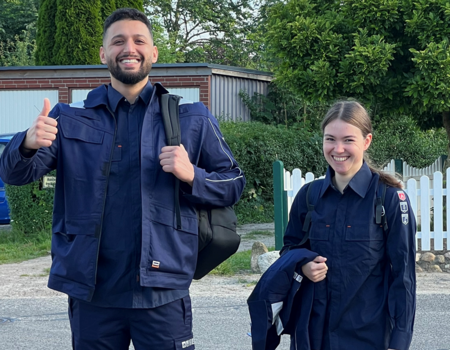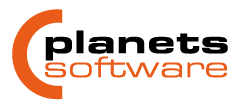News
![]()
Welcome to our news page! Here you will find the latest developments, exciting announcements, and interesting information about our company and products. We keep you up to date to ensure you don't miss any important information. Follow us on LinkedIn and Instagram to stay informed about the latest news.
NAMUR Annual General Meeting 2025
![]()
We are pleased to announce that our General Manager, Sebastian Mißbach, will be conducting a workshop on "Process X: Dataspace, AAS and AI – How to put it all together" as part of the NAMUR Annual General Meeting 2025 on November 27, 2025, at 3:00 p.m.
The workshop will cover topics such as the AAS Submodel Generator, Data Spaces, and the integration with third-party systems from a theoretical perspective. In addition, approaches, architectures, future developments and challenges will be discussed.
A particular highlight this year is that we have become a member of NAMUR. We are delighted to be part of this important community.
For more information, please visit the following link:
https://www.namur.net/de/anmeldung-zur-namur-hauptsitzung-und-workshops.html
Vespland 2.1
![]()
We are pleased to present the Vespland Update 2.1. This version introduces numerous improvements and new features designed to make everyday work more efficient. A particular highlight is the extensive expansion of the mobile app, which significantly simplifies the on-site device and component process. Additionally, a customizable dashboard is now available, providing important information and statistics at a glance.
Mobile App: Enhancements and Improvements
The mobile app has been significantly expanded. Devices and subcomponents can now be recorded directly on-site via QR code, NFC tag, or manually. Capturing nested subcomponents is also possible, including display in the component tree. The lead number or an alternative designation can be entered directly. The app is now available in English as well, and the language can be switched during login or project selection. The display has also been improved: if the device type is known, it is shown in the tree. A long press on a device opens either the last performed action or an info page. For the manufacturer Vega, the user manual can be downloaded. If a tablet has a built-in NFC reader, no external NFC pen is needed anymore.
Dashboard: Initial Expansion Stage
An interactive dashboard has been introduced where users can display statistics, data tables, and quick links via customizable tiles. The widgets are individually configurable (e.g., size, time period, local or global data). All layout adjustments remain saved even after logout.
In addition, the release notes can now be accessed directly from the dashboard, offering a clear summary of the changes in each version.
Component Catalog: New Features and Visualization
The component catalog now offers two views "Project" and "Complete", as well as a new filter function directly within the tree. The layout has been revised to also show product images, free-text fields and icons indicating assignment to PLT positions, Ex-certifications and safety functions.
There are new editing options: direct navigation, restoration of deleted objects, a link to edit mode, as well as support for nested components. Additionally, the display of manufacturer information and the generation of serial numbers have been improved, as well as AKZ output and attribute display.
Functional Safety
Safety functions have been extensively improved. Controls can now be placed at all levels of the AKZ structure. A dashboard displays relevant safety diagrams, including linear curve progression. Documents can be directly attached to the safety circuit. Furthermore, links to PLT positions and operational approvals are correctly maintained. The HFT classification has also been technically enhanced. Finally, a new test calculator according to NA106 has been completed and is currently under review.
Planeds 5.3
![]()
We are excited to introduce the new version 5.3 of Planeds. This release focuses on "planning efficiency and speed". To achieve this, many functions in Planeds have been significantly revised and expanded. Here's a small preview of new ways of working:
Performance
The overall speed of Planeds was a key focus of this version. Major efficiency improvements were made at crucial points in the code, which have a wide-reaching impact across the application. As a result, for instance, folders now load in near real time.
Autoconnect and Connection Handling
A large part of planning work takes place within the function environment. That’s why we’ve specifically improved the handling of connections. Autoconnect, reassigning connections without deletion, and inline placements are now part of the standard feature set in the function environment.
Documentation Output
Handing over excerpts of the documentation in PDF or printed format is still an important part of the planning phase. We’ve addressed this as well by introducing a one-click documentation generation feature. All relevant documents – including external ones – are automatically compiled and written into a complete PDF file.
Curious to learn more? Then take a look at our release notes!
Vespland Mobile Deployment
![]()
Our automation engineer Furkan and our software developer Sarah have successfully deployed the Vespland Mobile application at the Brunsbüttel facility, gaining valuable experience in the process. Their deployment began with a meticulously planned tour of the facility, during which they, along with the on-site contact person, visited various measurement points. There, they inspected the installed field devices and recorded them in detail using the app. This process involved not only photographing the devices but also capturing their serial numbers and documenting the location where each device was installed in the process control technology (PLT) station. This detailed recording created a comprehensive data base essential for the ongoing management and maintenance of the devices.
Furkan and Sarah paid particular attention to capturing the information required for Product Lifecycle Management (PLM). They ensured that all relevant data was fully and accurately recorded in the app to optimally represent the entire lifecycle of the devices. This careful process was significantly facilitated by the use of NFC tags (Near Field Communication). The NFC tags were affixed directly to the devices and contained crucial information such as the manufacturer and serial numbers, as well as the exact PLT station. Thanks to these tags, later identification of the devices is always possible, which represents a significant time-saving, especially for repairs or maintenance.

In addition to documenting the field devices, they also focused on recording the I/O cards in the facility's electrical room. They approached this task with equal thoroughness, documenting all relevant data. At the end of their deployment, they transferred the collected information to the Vespland platform, making it immediately available for further processing and analysis. During their deployment, they also noted that there is room for improvement in the app. They identified specific optimization suggestions that will be considered in future updates to the application. At the same time, they took the opportunity to familiarize themselves with the challenges of on-site practical work associated with this type of data collection. Thanks to the user-friendly interface of the Vespland application, Furkan and Sarah were able to quickly and efficiently utilize the app's advanced features. This enabled them to precisely document the entire lifecycle of the devices while also providing valuable feedback for improving the application.
![]()
Our app, Vespland Mobile, thus proves to be an ideal solution for companies looking to efficiently manage their technical devices and comprehensively document their lifecycle. With the ability to operate both online and offline and transfer data to Vespland at any time, Vespland Mobile offers unparalleled flexibility and reliability for use in various industrial environments.
Planeds 5.2
![]()
We are excited to announce the launch of Planeds 5.2. This new version, based on user feedback and suggestions, introduces a variety of new and enhanced features.
Expanded Network Overview
Enhance your documentation with detailed, easy-to-plan network and bus overviews. With intelligent information on all your networks and communication networks of your facility, including comprehensive participant details such as port numbers, addresses, and transmission speeds, effortlessly bring your documentation into the digital age.
Introduction of Folders in the Object Manager
We have optimized the Object Manager with the introduction of folders. Create folders and organize your data by simply dragging elements into them. This provides better visibility and is available across all planning modules.
Intelligent Linking of Plant Components with the Local Environment
With Planeds 5.2, you can link plant components with the local environment. You can now add intelligent plant components to your layout plans, centralizing all relevant information such as environmental data and installation conditions in one place. All installed devices such as sensors automatically inherit this data.
This is just a glimpse into the numerous innovations in Planeds 5.2. For more details, please refer to our release notes:



